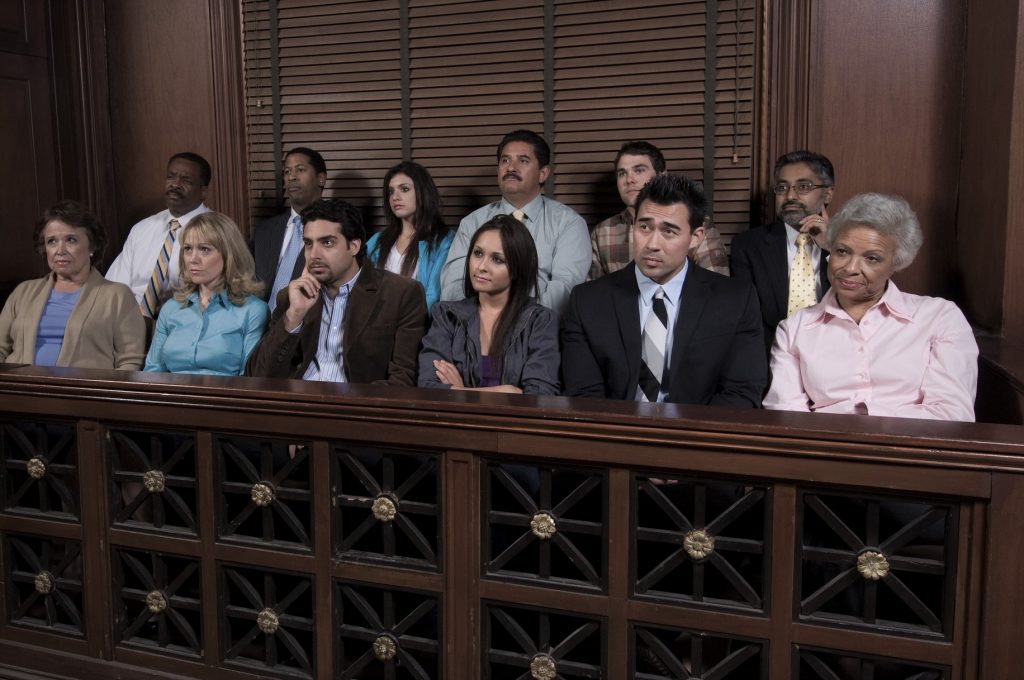
12 Jul Virginia joins the Majority of the Nation and Ends Jury Sentencing
For centuries, Virginia has had jury sentencing in place for criminal cases. This practice meant that when a defendant exercised their constitutional right to a jury trial they would also be sentenced by a jury rather than be sentenced by a judge. Thomas Jefferson championed the practice of jury sentencing and put it in place when Virginia was still a colony.
At the time, founders viewed jury sentencing as a way to ensure fairness in sentencing. Proponents argued that it would protect against judicial misconduct and to check the power of the judiciary. A majority of states, however, shifted away from this mindset and did away with jury sentencing. Only a small handful of states continue to utilize jury sentencing as a practice. And, up until July 1, 2021 Virginia was one of those few states.
The criticism against jury sentencing has been growing for years.
The practice of jury sentencing has become increasingly more concerning. This concern comes as scholars and legal practitioners realize the effects it has on case dispositions. In Virginia, jury sentencing has resulted in much harsher sentences. This, in turn, has resulted in Virginia’s jury trial rate being extremely low.
This is not because juries are by nature more punitive than judges. Rather, it is because juries receive less information and powers than judges. Judges have sentencing guidelines that set forth the recommended sentence and the various mitigating or aggravating factors. The judge also receives a sentencing report that details the criminal history and background on the defendant. This report in combination with the guidelines provide judges with a more complete image of the defendant and the proper punishment.
In comparison, juries receive none of this information. Likely, the jury does receive some background information on the defendant. But this background information does not come in the form of a report that explicitly lays out all of the defendant’s background. The judge also has the power to suspend all or a portion of a mandatory sentence. Whereas the jury has no such power. The power to suspend a sentence in combination with the sentencing guidelines are the biggest reasons that judicial sentences are significantly shorter.

Virginia’s mandatory-minimum sentence for drug offenses illustrates the problem.
As an example, a drug offense in Virginia carries a mandatory minimum sentence of five years. The guidelines recommend that four of the five years be suspended. More simply, this means that the defendant only serves one year of active time in jail. Practically, this means that defendants who waive a jury trial and face sentencing from a judge essentially guarantee a one-year sentence.
Conversely, Virginia defendants who exercise their constitutional right to a jury and face jury sentencing are, at a minimum, going to serve five years. To emphasize this point, a defendant who merely exercises their constitutional right to a jury will receive a sentence that is four years longer than if they had opted to have a bench trial or plead guilty.
It is important to recognize here that judges adhere to the guideline rather than the mandatory minimums set because of two distinct reasons. First, the Supreme Court of Virginia commissioned and largely drafted these guidelines. They are an essentially judge-motivated creation within Virginia.
Second, the Virginia Legislature appoints the state’s judges. In deciding whether to reappoint a judge, the Legislature looks at the sentencing history of the judge. The Legislature views any deviation from the guidelines, especially an upward deviation, as a mark against reappointment. Judges are fully aware that their sentencing history is considered. As a result, judges likely strictly adhere to the guidelines in large part out of concern for their re-appointment eligibility. Statistics from the Virginia Sentencing Commission show that judges adhere to the guidelines over 80% of the time. Conversely, juries only comply with the guidelines about 40% of the time.

Virginia now allows criminal defendants to choose between judge and jury sentencing.
The Virginia Legislature has now finally recognized these issues with jury sentencing. As a result, it now allows defendants who opt for a jury trial to choose whether a judge or a jury gives their sentence, too. This change will likely have a few effects on the criminal system in Virginia. First, it is logical to presume that Virginia’s jury trial rates will increase. Presently, Virginia’s jury trial rate is at just over one percent. Given the jury rates in other states, it is likely that Virginia’s jury trial rate will increase to around four to seven percent in the coming years.
Second, it is likely that sentences will be significantly less harsh across the board. Because it is unlikely that any defendant will consent to jury sentencing, judges will likely be handing down sentences in every case. This means that nearly every sentence will be a guideline sentences, i.e. a much lighter than a jury would gives.
Again, a simple drug offense from a jury would have been five years minimum for any defendant that demanded a jury trial. But now defendants charged with a drug offense will presumably all be sentenced by a judge and receive a guideline sentence of only one year. Virginia was extremely slow to provide across-the-board judicial sentencing. But it has finally made the crucial step toward sentencing equity. And, hopefully, it will continue this positive trend of criminal justice reform.

